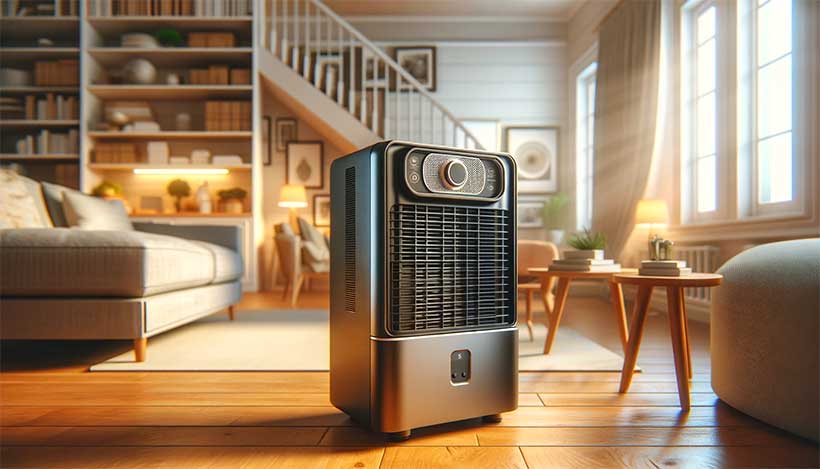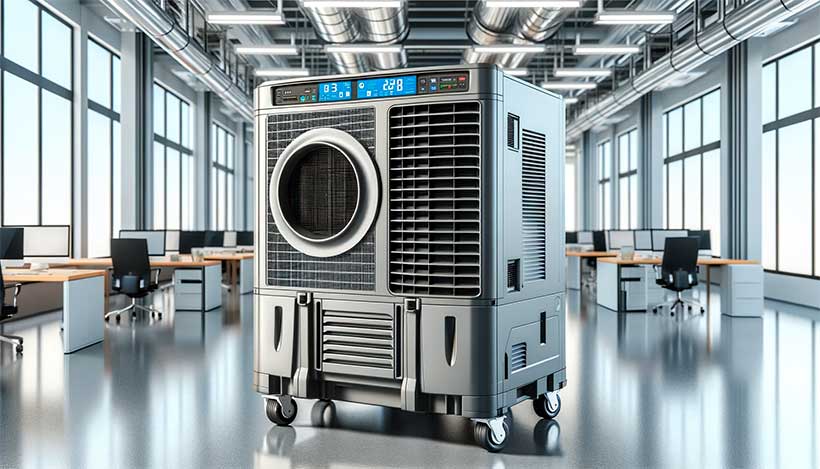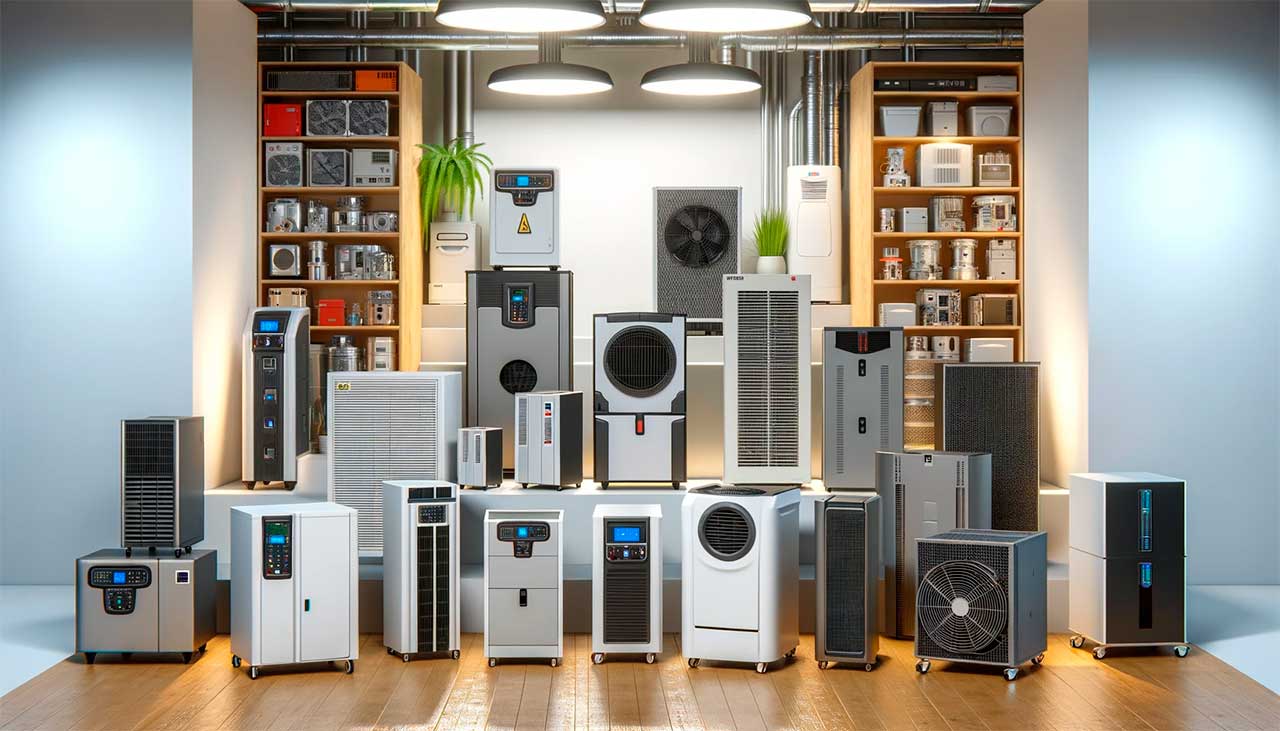Welcome to our comprehensive guide on the best crawl space dehumidifiers of 2023! If you’re struggling with dampness in your crawl space or basement, you’re not alone. Excess moisture can lead to a host of problems, from mold growth to structural damage. That’s why choosing the right dehumidifier is crucial for maintaining a healthy and comfortable living environment.
In this article, we’ve done the heavy lifting for you, comparing the top 5 commercial and 5 home dehumidifiers based on their features, user reviews, pros, and cons. Whether you’re a homeowner, a business owner, or someone in charge of maintaining a commercial space, you’ll find valuable insights and practical solutions to tackle humidity head-on.
Table of content:
1.1 The Best Models Comparison
1.2 Common Use Cases
2.1 The best Models Comparison
2.2 Common Use Cases
3. Installation and Maintenance Tips
3. FAQ
Alright, buckle up! I’m channeling my inner Gary Halbert to give you the lowdown on the top crawl space dehumidifiers of 2023. This isn’t just any old list; it’s a battle royale between the heavyweights of moisture control, and I’ve got the inside scoop on each one. Let’s dive in!
Home Dehumidifiers: For the Cozy Corners

- hOmeLabs Energy Star Dehumidifier – 35 Pint: A great choice for medium to large rooms. It’s like the ninja of dehumidifiers – powerful yet discreet in its operation. However, it’s a chatterbox, so expect some noise.
- BaseAire Basement Dehumidifier 113 Pint: This one’s like your reliable, sturdy friend who’s always there for you. Great for whole-house use with a continuous drain hose. A bit bulky, but it’s all about the power.
- ALORAIR Crawl Space Dehumidifier HS35: Compact and energy-efficient, this is the dehumidifier for homeowners who hate dampness but love saving on electricity. It’s got a 5-year warranty, but it’s not the quietest kid on the block.
Special Mentions: The Underdogs
- AlorAir 113-Pint Commercial Dehumidifier: A beast for those medium-capacity needs, ideal for residential crawl spaces up to 1,200 square feet. It’s got a built-in filter and automatic defrost, but you’ll have to buy the remote separately.
- GE 22-Pint Portable Dehumidifier With Smart Dry: The perfect pick for smaller basements. It’s compact and comes with a top-mounted LCD screen. Though it’s a quiet worker, it lacks a drain hose and is a bit bulky for tight spaces.
- AlorAir 198-PPD Basement Crawl Space Dehumidifier: A heavyweight champion for large spaces up to 2,600 square feet. It’s got a condensate pump and automatic restart feature. However, like its siblings, the remote control is sold separately.
- hOmeLabs 50-Pint Energy Star Dehumidifier: Ideal for the largest of crawl spaces. This one boasts a removable tank and filter, and an easy-to-use digital control panel. Note that you’ll need to buy the drainage hose separately.
- AlorAir 120-PPD Basement Crawl Space Dehumidifier: Tailored for smaller spaces and energy-efficient. It has an automatic defrost mode and a gravity drain. Again, the remote control is an additional purchase.
| Dehumidifier | Pros | Cons | Capacity | Ideal For |
|---|---|---|---|---|
| ALORAIR Crawl Space Dehumidifiers 120 PPD | Energy Star Certified, Commercial-grade, 5-year warranty | Heavy (67 lbs) | 120 PPD | Basements, Crawl Spaces |
| ALORAIR Commercial Dehumidifier with Pump and Hose | 120 PPD capacity, Compact and portable, 5-year warranty | Loud operation | 120 PPD | Commercial, Industrial Settings |
| Abestorm Commercial Dehumidifier with Pump, 70 PPD | Energy Star certified, Compact and portable, 5-year warranty | Loud operation | 70 PPD | Large Crawl Spaces up to 1,000 sq. ft |
| ALORAIR Commercial Dehumidifier 180 Pint Capacity | Large capacity, Commercial-grade, 5-year warranty | May be noisy | 180 Pint (90 Liters/Day) | Water Damage Restoration, Basements, Warehouses |
| ALORAIR Commercial Dehumidifier with Pump Drain Hose | Powerful dehumidifying capacity, Great for commercial spaces, 5-year warranty | May be too large for residential use | 180 PPD | Basements, Warehouses |
The most common use cases for home dehumidifiers include:
- Basement Moisture Control: Homeowners often use dehumidifiers in basements to prevent mold and mildew growth, especially in humid climates or during rainy seasons.
- Allergy Relief: Dehumidifiers can help reduce common allergens like dust mites and mold in homes, providing relief for people with allergies or respiratory issues.
- Laundry Drying Assistance: In homes without a dryer or with limited outdoor drying space, a dehumidifier can speed up the indoor drying process of clothes.
- Protecting Sensitive Items: Dehumidifiers are used to protect items sensitive to moisture, such as musical instruments, electronics, and important documents.
- Comfort and Odor Control: By reducing humidity, dehumidifiers can make the home environment more comfortable and eliminate musty odors often associated with dampness.
Commercial Dehumidifiers: The Big Guns

- ALORAIR Crawl Space Dehumidifiers 120 PPD: This beast is the Superman of dehumidifiers. With a whopping 120 PPD moisture removal rate, it’s like a black hole for humidity. It’s Energy Star certified, so it sips electricity like a fine wine. But it’s a heavyweight at 67 lbs, so don’t expect to move it around easily.
- ALORAIR Commercial Dehumidifier with Pump and Hose: Another ALORAIR champ, this one’s compact and portable with the same 120 PPD capacity. Ideal for those commercial gigs, but it’s got a voice – it’s loud.
- Abestorm Commercial Dehumidifier with Pump 70 PPD: The perfect middleweight, handling up to 1,000 sq. ft. spaces. Energy Star certified, but shares the same loud personality trait as its bigger sibling.
- ALORAIR Commercial Dehumidifier 180 Pint Capacity: This is the Hulk of dehumidifiers. It’s got a massive 180 pint capacity, but with great power comes great noise. It’s for those serious water damage restoration jobs.
- ALORAIR Commercial Dehumidifier with Pump Drain Hose 180 PPD: Similar to the 180 pint one, but with a bright yellow color that screams “I mean business.” Perfect for the big, commercial moisture battles.
| Dehumidifier | Pros | Cons | Capacity | Ideal For |
|---|---|---|---|---|
| hOmeLabs Energy Star Dehumidifier – 35 Pint | Energy Star certified, Powerful moisture removal, Ideal for medium to large rooms | Loud operation | 35 Pint | Medium to Large Rooms, Bedrooms, Basements |
| BaseAire Basement Dehumidifier 113 Pint | Powerful dehumidifying capacity, Continuous drain hose, 5-year warranty | May be too large for some spaces | 113 Pint | Home, Garage, Crawl Space |
| ALORAIR Crawl Space Dehumidifier HS35 | Energy Star certified, Auto defrost feature, 5-year warranty | May be noisy | 70 PPD | Homeowners, Commercial Properties with Crawl Spaces |
| AlorAir 113-Pint Commercial Dehumidifier | Built-in filter, Gravity-draining design, Automatic defrost setting | Remote control sold separately | 113 PPD | Residential Crawl Spaces up to 1,200 sq. ft |
| GE 22-Pint Portable Dehumidifier With Smart Dry | 3-speed fan, Smart Dry setting, Audible bucket full alarm, Quiet operation | Drain hose not included, Large for tight spaces | 22 Pint | Smaller Basements |
Common use cases for industrial dehumidifiers include:
- Water Damage Restoration: Used extensively in recovery efforts following floods or water leaks to dry out buildings and prevent mold growth.
- Manufacturing Processes: Essential in industries where humidity control is crucial, such as pharmaceuticals, food processing, and electronics manufacturing, to ensure product quality and prevent spoilage.
- Storage and Warehousing: To protect goods from moisture damage, particularly important for items sensitive to humidity like paper products, textiles, and electronics.
- Construction Sites: Employed to speed up drying processes, such as in plaster and concrete work, ensuring faster project completion.
- Climate Control in Data Centers: To maintain optimal humidity levels, protecting sensitive computer and server equipment from moisture-induced damage.
Installation and Maintenance Tips for Crawl Space Dehumidifiers
- Installation Process:
- Planning and Preparation: Begin by evaluating the dimensions and layout of your crawl space. Note potential obstacles, moisture-prone areas, and access points for power and drainage. Consider humidity levels and if any repairs are needed before installation. Gather necessary tools like power cords and drainage materials.
- Power Connection: Find a nearby electrical outlet within a reasonable distance from the dehumidifier’s location. If needed, use outdoor-rated extension cords. Ensure the dehumidifier is connected securely to the power source.
- Drainage System Setup: Attach a drainage hose to the dehumidifier’s pump or gravity drainage port. Direct the hose to a suitable drainage point such as a floor drain, sink, or an exterior location, ensuring no obstructions in the hose.
- Maintenance Guidelines:
- Routine Cleaning: Regular maintenance is crucial for optimal performance. Start by cleaning or replacing the air filter every few weeks or as recommended by the manufacturer. A clogged or dirty filter can reduce efficiency and increase energy consumption.
- Coil and Water Tank Maintenance: Regularly inspect and clean the coils and the water collection tank or drainage system to prevent dust accumulation and ensure smooth water removal.
- Overall System Check: Periodically check the entire system for any signs of wear or damage and address them promptly to prevent bigger issues.
- Additional Tips:
FAQ: Crawl Space Dehumidifiers
Q: What is the ideal humidity level for a crawl space?
A: The ideal humidity level for a crawl space is typically between 30% and 50%. This range helps prevent mold growth and structural damage.
Q: Can a dehumidifier prevent mold in crawl spaces?
A: Yes, by maintaining low humidity levels, dehumidifiers can significantly reduce the risk of mold and mildew growth in crawl spaces.
Q: How often should I empty the dehumidifier tank in my crawl space?
A: It depends on the tank size and humidity level. Some models have continuous drain options, eliminating the need for manual emptying.
Q: Are crawl space dehumidifiers energy efficient?
A: Many modern dehumidifiers are Energy Star certified, indicating higher energy efficiency. It’s best to choose a model with this certification for energy savings.
Q: Do I need a professional to install a crawl space dehumidifier?
A: While some homeowners may install a dehumidifier themselves, professional installation is recommended to ensure optimal positioning and function, especially for larger, commercial-grade models.
Q: How do I choose the right size dehumidifier for my crawl space?
A: The size depends on the square footage of your crawl space and its existing humidity levels. Consult with a professional or refer to the manufacturer’s guidelines for the appropriate size.
Conclusion
So there you have it! Whether you’re tackling a damp commercial space or just want to keep your home’s crawl space dry and cozy, there’s a dehumidifier out there that’s perfect for your needs. Remember, it’s not just about drying out the air; it’s about creating a comfortable, healthy environment. So choose wisely, and let the battle against humidity begin!
Sources
8 Best Selling Crawl Space Dehumidifiers for 2023
The Best Crawl Space Dehumidifiers of 2023

Leave a Reply